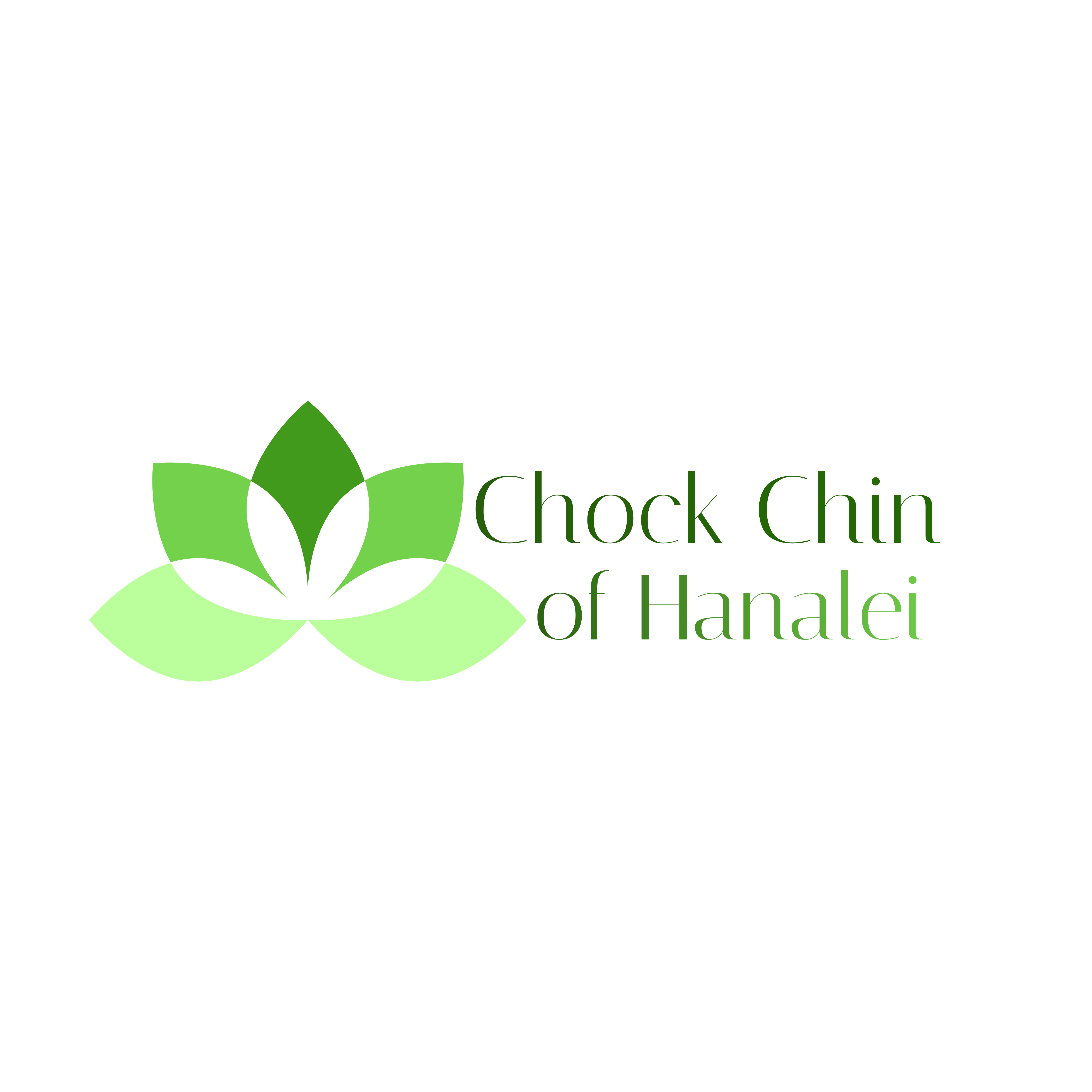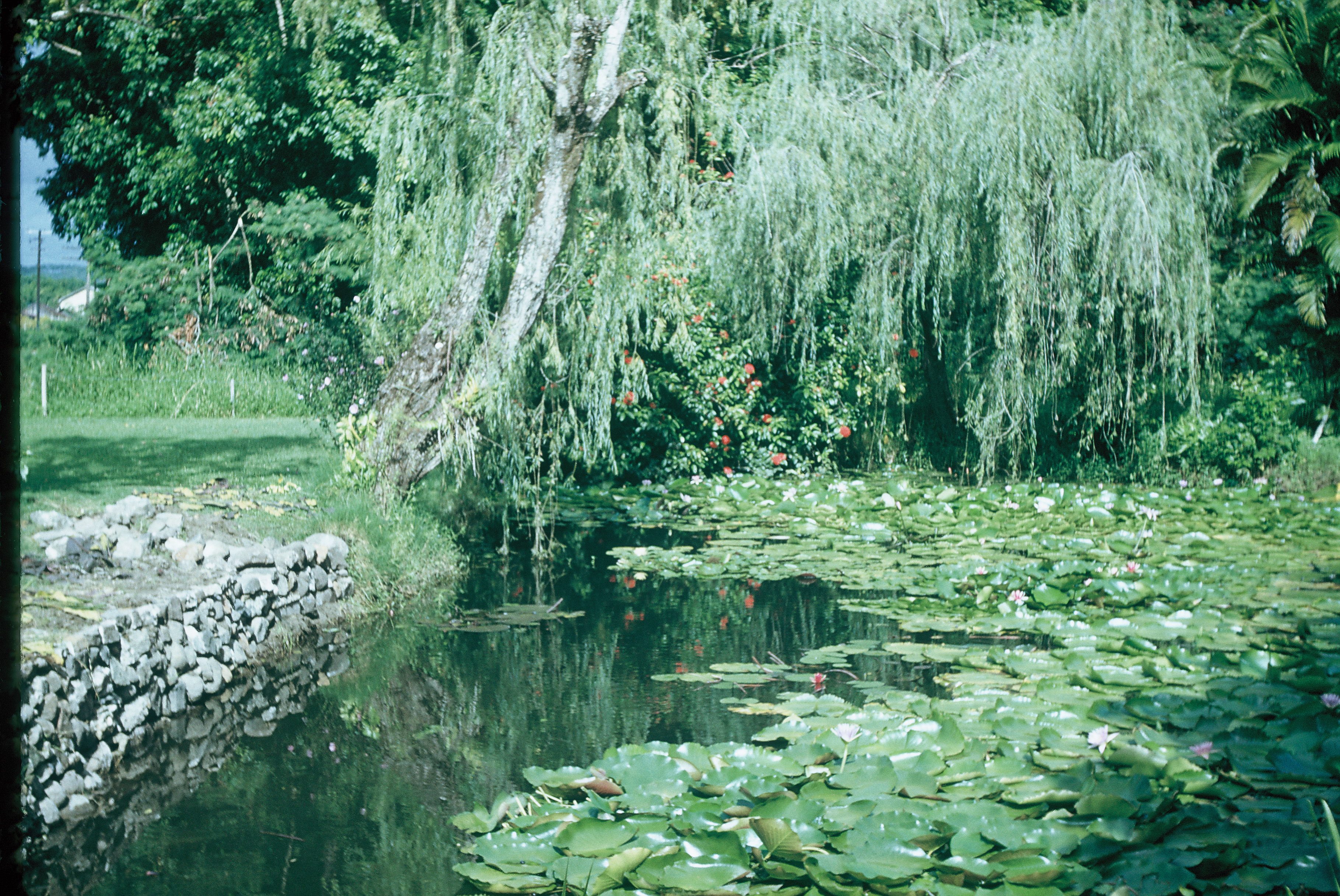Tourists to Hanalei throughout many decades were advised not to miss the famous Hanalei Lily Pond, dug by Chock Chin and his sons originally as a Lotus Pond near the family home. Located along the main road, it was featured in the travel photos of thousands of tourists.
Do not imagine a dainty little backyard pond here. This was a serious installation, wide, and well planned, fed by a spring for a constant supply of fresh water. Here are some images I was able to buy on eBay, from people selling old slides they inherited from their parents and grandparents.
Here’s how it looked in 1955.
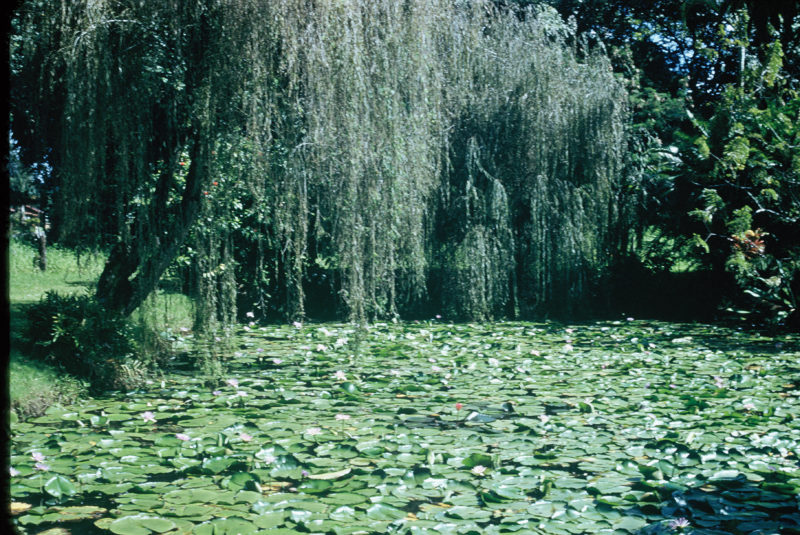
Hanalei Lily Pond – 1955
And a few years later.
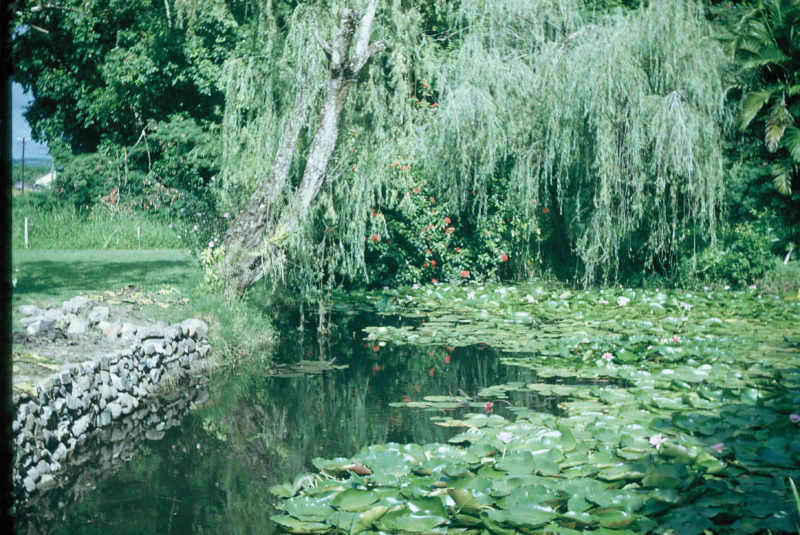
Hanalei Lily Pond 1958
In 2022 we finally located the place where the lily pond once stood. We had driven by it every single time we drove into or out of Hanalei, but didn’t realize it. The lady living in the little green house next to it told us exactly where it was.
The willow tree that is in all the shots the tourists took in the 1950s still survives. Notice the change in water level from 1955 to 1958. When the pond was full, you couldn’t see the rock wall interior of the pond. Today this has all reverted to dirt.

Lotus/Lily pond area — now dried up and filling in

Lily pond — view from the back. You can see the slight berm that rings the depression where the plants have grown up in the pond area.
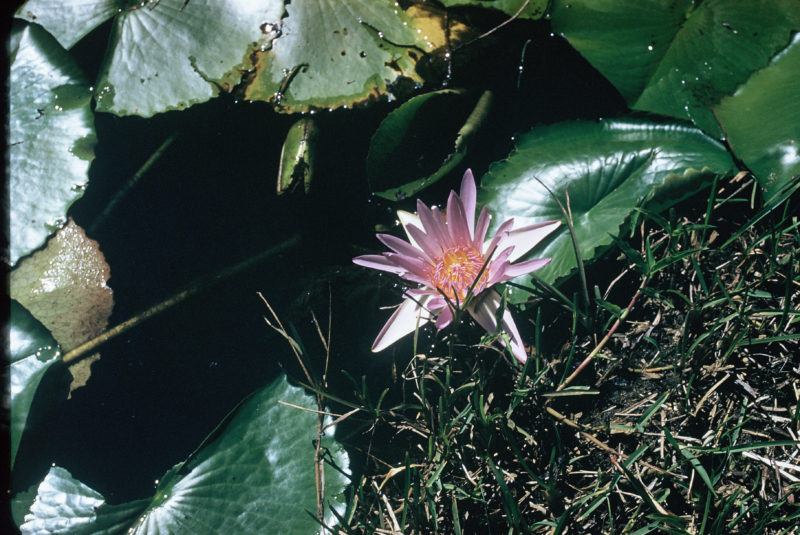
Lily in the Hanalei Lily Pond – 1958
The children remembered this pond with great fondness. It was created by their Papa for very practical reasons, primarily focused on food (of course). He wanted a constant supply of edible lotus roots (lin ngau). He imported the originals from China. His daughter Janet wrote, “They had beautiful white lotus flowers that bloomed constantly according to Dorothy. Uncle Lum Tat [Uncle was an honorary title given to any male friend of the family] used to harvest the roots in knee-deep mud and water. Somehow the lotus plants ceased to grow so Mama planted many varieties of water lilies in the pond. Their many hues and colors attracted both locals and tourists who were thrilled by such a beautiful scene.”
Why go to all this work? Any obsessive chef will understand. The best way to ensure a supply of fresh, high quality ingredients for your table is to grow them yourself.
Eating the Lotus
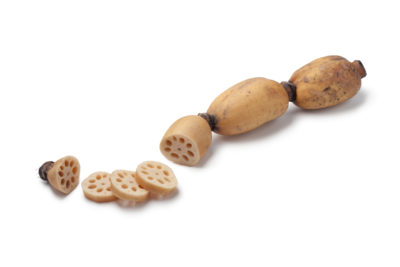
Lotus root and slices
Lotus roots were a staple ingredient from the Guangdong province, and a delicacy in the hands of a master chef like Chock Chin. His daughter Nee Chang recalls, “Papa used the ngau to cook a delicious soup with ngaw baak naam (Beef brisket), dried tangerine peel, dried red dates, ginger root, and liquor. He also had lotus root sliced and stir fried with pork or beef.”

Here are a couple of recipes that sound a lot like the ones Nee Chang is describing.
Lotus Root soup (this one uses pork instead of Papa’s brisket, but check it out to understand the importance of buying a fresh, muddy lotus root. So this is why Chock Chin goes to the trouble of digging out a gigantic pond…) I’m hunting for a brisket-based soup recipe that uses the ingredients Nee Chang listed.
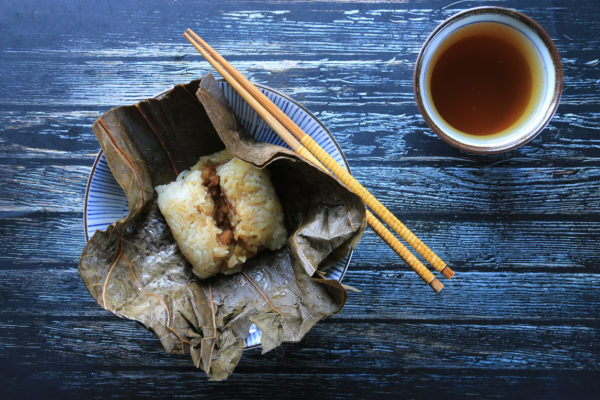
Lo Mai Gai
Lo Mai Gai – The lotus leaves were used as a wrapper for a dim sum classic: Lo Mai Gai — aka: sticky rice wrapped in a lotus leaf. I’ll put that recipe in a separate post — it’s something we all need to master.
My family loves Lo Mai Gai. Evidently, Chock Chin rocked it because his children remembered all the details. Nee Chang rhapsodized about this dim sum delicacy as follows:
“The lotus leaves Papa used as wrapper of delicious joong (wrapped rice triangles made of mochi (glutinous) rice, roast pork, lup cheong (Chinese pork sausages), and other goodies like chestnuts, peanuts, or red beans and yolk of salted duck eggs.) How delicious tasted the pork kidneys wrapped in lotus leaves and baked in the oven! ”
In addition to the lotus roots, Papa stocked the pond with fish, so the family had a sweet little ecosystem going there, where they could fish, gather lotus roots and lotus leaves, and even pick flowers for the table.
Soon it seemed like a good idea to add bull frogs.
The Best Lesson of the Lotus Pond
A lot of interesting benefits came from the decision to begin raising bull frogs in the pond. For one thing, it ensured a supply of large delicious frog legs, which were, according to Nee Chang, “more delicate than chicken.” (Here’s a recipe if you’d like to try it, and you can find a place to sell you frog legs.)
They added a beautiful new texture to the sounds of the night. Nee Chang wrote, “They multiplied and serenaded us with their bass concert at night, lulling us to sleep.”
It also enabled Papa to teach his children a beautiful lesson that left an indelible impression on them and shaped their sense of compassion and charity throughout their lives. To me, this is the most important story of the Lotus Pond.
As Nee Chang tells it: “Sometimes on a dark night we would see a light moving around the pond. We knew that someone was stealing our bullfrogs. Papa would not let us scare him away because he was an elderly, needy man.
“Instead, when Papa needed frog legs for a special dinner, he would drive us out to our rice plantation at Waikoko to catch bullfrogs. It was exciting and we had to be so very quiet. Papa would shine the carriage light into the edge of the rice field to attract the frogs. As soon as we spotted one, we carefully and quickly grabbed it around the middle and deposited it into a wet bag. When we got home Mama would have rice soup or something hot and delicious for us.”
I have thought about that story many times since I first read it, and am struck what it tells us about the values of this man.

It is 2 miles from Hanalei to Waikoko beach
I think of the inconvenience he was willing to endure in order to make sure that this needy neighbor had the chance to catch all the prime frogs he needed from the pond. He stopped sending his children out to run over to the pond and grab a few of the huge frogs he was cultivating in the pond he had dug and shaped himself. Instead, he hitched up the carriage, loaded up the children, and drove two miles out of town to their plantation, where they would work at the edge of the rice field to try to find the frogs that might be there.
I think it tells us how well he understood how to preserve another man’s pride. He was, after all Chinese. He understood the concept of saving face. He does not give the man a bag of frogs every week. He does not give him money, or permission to hunt in his pond. He simply decides not to notice him there, and gives him space and freedom from conversation about it.
I can just imagine the quiet conversations he had with the children in the carriage as they rolled along under the moonlight, as he explained why they were doing this and taught them the proper way to live a bounteous life that blesses the lives of others.
